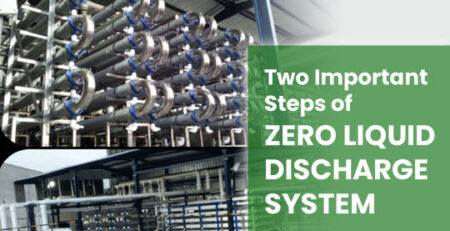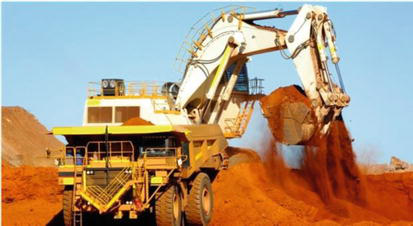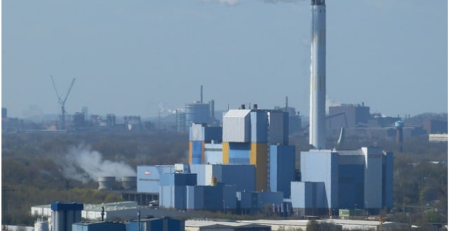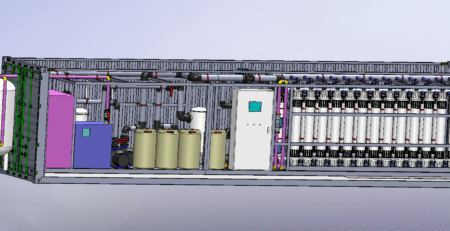Water Softening Plants – Water Softeners
Among the various options for softening water are Sodium, mineral tanks, and regeneration systems. Sodium has the advantage that the water is available even while the unit is recharged. Regeneration systems also have the advantage that softened water is available in the unit at all times. This is important because salt or potassium chloride must be replenished regularly to maintain the softening capacity of the softening system.
Water Softener Regeneration
Regeneration of water softening plants is crucial for the continued operation of a softening plant. A water softening plant uses ion exchange to exchange calcium and magnesium ions with neutral sodium ions, softening the water to a desired degree of hardness. In general, water for drinking is softened to a certain degree, while industrial water is always softened to a high degree. The regeneration process of an ion exchange resin is automatic and will vary based on the hardness of the water. Generally, the capacity of the Desalination plants is calculated according to the amount of water that the system treats.
A softening plant’s resin can only soften water for a limited period, so regeneration is necessary to replenish the resin. This regeneration process involves injecting a solution of sodium chloride and sodium nitrate into the softener reservoir and recharging the resin beads with the sodium chloride. This process reverses the effects of ion exchange, allowing water to anavar frauen become softer again.
Regeneration of water softening plants occurs every few weeks. Regeneration takes about a few hours and varies based on the hardness level of the water in your home. To reduce regeneration time, opt for a softener with a high capacity. If you’re worried about the cost of recharging, consider the fact that a water softening plant can save you money and a lot of aggravation.
Regeneration of water softening plants can also be affected by a clogged drain line. A blocked drain line can blow off the softener during regeneration, flooding your basement and garage. The cost of regeneration is usually dependent on the size and design of your softener. This regeneration process is important to keep the resin beads from becoming inefficient. It should be carried out regularly. Nevertheless, a larger amount of water can lead to frequent regeneration.
Mineral Water Softening Tanks – Water Softening Systems
Mineral tanks for water softening are used to make water soft. Water softening systems work by using a brine tank that contains a highly concentrated solution of potassium and salt. These salt pellets are added to the water softener periodically to flush the system’s minerals. These systems are also equipped with a control valve that regulates the flow of water through the tank during the regeneration process. These systems are usually installed near the point where water is accessed from the city, and treat only water used for drinking, washing, and cooking. They do not treat water used for outdoor irrigation or other uses.
Saltwater from a brine tank enters a resin tank. The salt solution forces the minerals out of the resin beads, replacing them with fresh sodium ions. The water then flows into a drain, flushing the water softening system and its resin out. This process removes most of the hard minerals in the water, and it allows the system to soften it again. Mineral tanks for water softening have been around for decades.
A mineral tank is a tall, narrow tank that contains several cubic feet of porous plastic beads. These negatively charged beads attract positively charged calcium and magnesium particles, which they trap in the resin. The beads will eventually become saturated with the minerals, so they must be cleaned. The next component of the system is integral to the regeneration process. A brine tank is a separate tank used for the brine solution. Salty water helps to regenerate the resin beads and make them work as intended.
Another way to regenerate your water softening system is by installing a mineral tank. The resin beads are a component that collects minerals and hardness ions from water. These beads accumulate hardness ions over time, and they need regeneration every couple of years. The regeneration process can take anywhere from an hour to two hours. A water softener is not just installed in your plumbing system, but it is part of your house’s plumbing.
Sodium Water Softeners
To operate a weak acid cation system, the influent must contain a level of hardness equal to or less than the alkalinity level. If the alkalinity level is higher than this, the hardness level will remain high in the effluent, which requires a sodium water softener to completely remove it. During an initial weak acid cation service cycle, mineral acids are produced. During the second service cycle, the hardness level rises again and the effluent contains alkalinity.
When operated properly, sodium water softeners produce an effluent with virtually no detectable hardness. However, a small amount of hardness will leak into the effluent depending on the hardness of the influent water and the amount of salt used for regeneration. As the process progresses, hardness leakage is evident and increases rapidly. Once the exhaustion of ion exchange resin occurs, regeneration is required.
Chemical Softeners
Water softening plants use chemical agents to change hard water’s mineral composition. They remove the calcium and magnesium ions while monitoring the water’s flow. They also periodically clean their system, known as regeneration. A typical softening plant consists of three main components: pre-filters, a water softener vessel, and a brine tank. Salt is purchased in blocks, granules, and pellets.
The primary media in water softening plants is ion exchange resin, which binds and absorbs hardness ions. The resin is a material made up of a layer of small beads with highly developed pores that trap hardness ions while releasing other ions. The resin can be manufactured to prefer one type of ion over another. The majority of these resins are made of cross-linked polystyrene.
Waterman Engineers Australia reduces your water softening costs, so invest in a softening system that regenerates based on actual usage.
Reverse Osmosis Water Softeners
Reverse osmosis water softeners use a membrane to process water. The process moves the solvent from a low solute concentration to a high solute concentration in water. This process creates osmotic pressure as the difference between the solute concentration and water potential decreases. This process uses three times as much water as a normal osmosis system does during the purification phase. However, it’s important to monitor your water softening plant carefully for microbial contamination and membrane degradation.
The process also reduces the number of hardness salts in water, which affects the performance of cooling systems, boilers, and recirculating cooling systems. Hardness salts can also affect boiler performance, which can lead to higher energy and water costs. Reverse osmosis water softening plants are also beneficial for houseplants and can provide healthy, balanced nutrient solutions for your plants.
Reverse osmosis water softeners work by forcing a concentrated solution through a semi-permeable membrane. In the process, water molecules are forced to move through the membrane, leaving dissolved salts behind in the reject stream. The high-pressure pump forces the water across the membrane, leaving between ninety-five and ninety percent of dissolved salts in the reject stream. The amount of pressure used depends on the concentration of salt in the feed water, as more salt requires more pressure to overcome osmotic pressure.
The Bottom Line
The process of water softening is an effective way to treat your water, while simultaneously providing a healthier home for your family. It reduces energy costs, increases the life of your appliances, and saves you money on bottled water. The added benefits of water softening plants are worth the investment.
Water Softening Plants Frequently Asked Questions
1) What is a water softening plant?
A water softener lowers the amount of dissolved calcium, magnesium, ions in hard water.
2) How does a softening plant work?
Water enters the softener and flows through the ion exchange resin that has been charged with sodium (Na+) ions during the softening cycle. Hardness ions (Ca2+ & Mg2+) on the ion exchange resin physically interchange with sodium ions as hard water flows through it.
3) What is the best method of water softening?
The two non-chemical techniques for softening water that are most frequently employed are distillation and reverse osmosis.
4) Which water softening method gives the purest water?
You may provide the purest drinking water for your household by employing a reverse osmosis system in addition to your water softener. Reverse osmosis removes a variety of pollutants that are often present in regular tap water, improving the flavour of your drinking water. Mainly water softener with Sodium charged ion exchanged resin.
5) Are water softeners really worth it?
Water softeners are useful for a variety of factors. Very useful for industrial equipment like boiler, heat exchangers and mainly increase the longevity of your home’s equipment. Mineral buildup inside your pipes and water fixtures can also be avoided with the use of water softeners.












